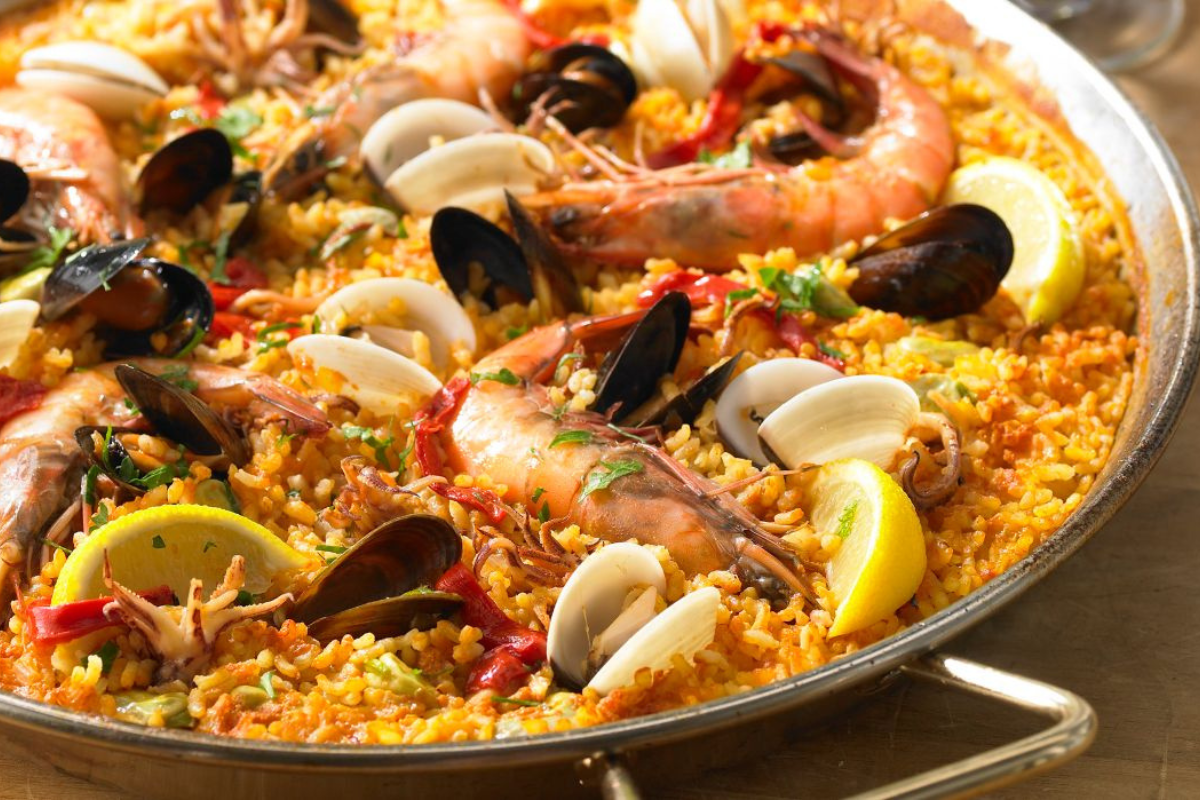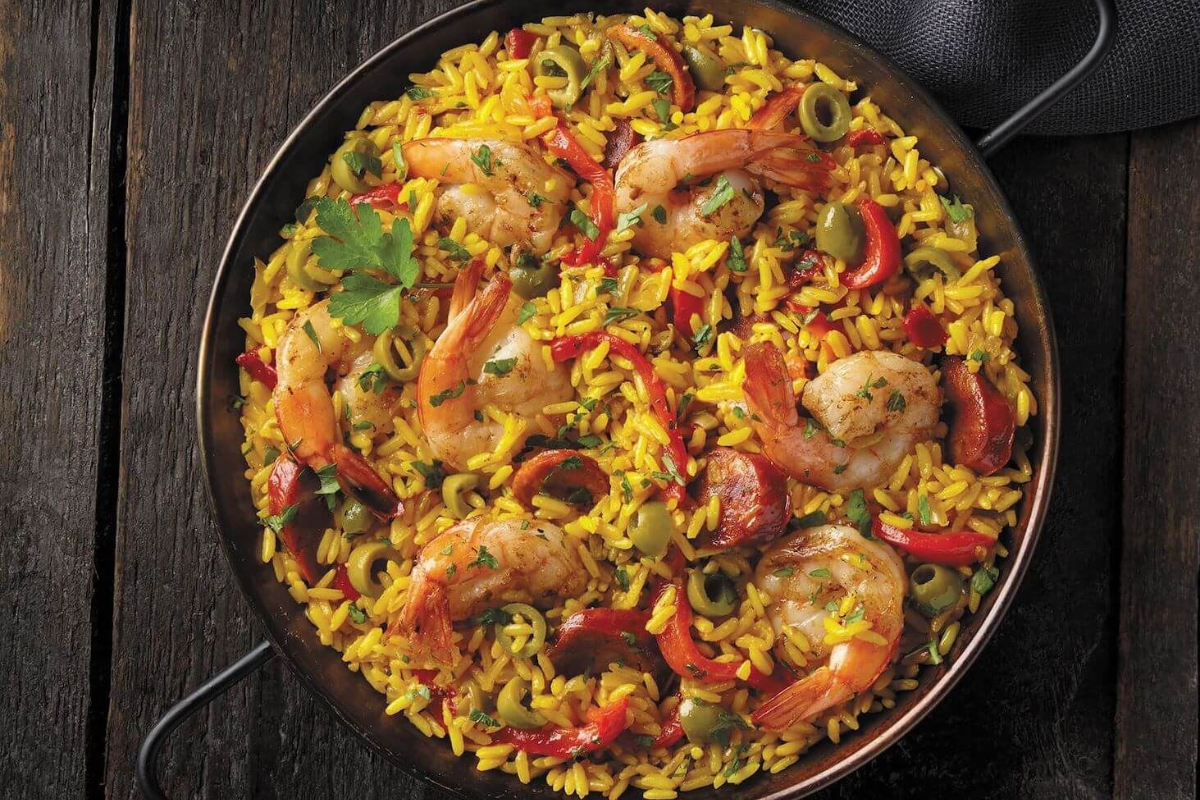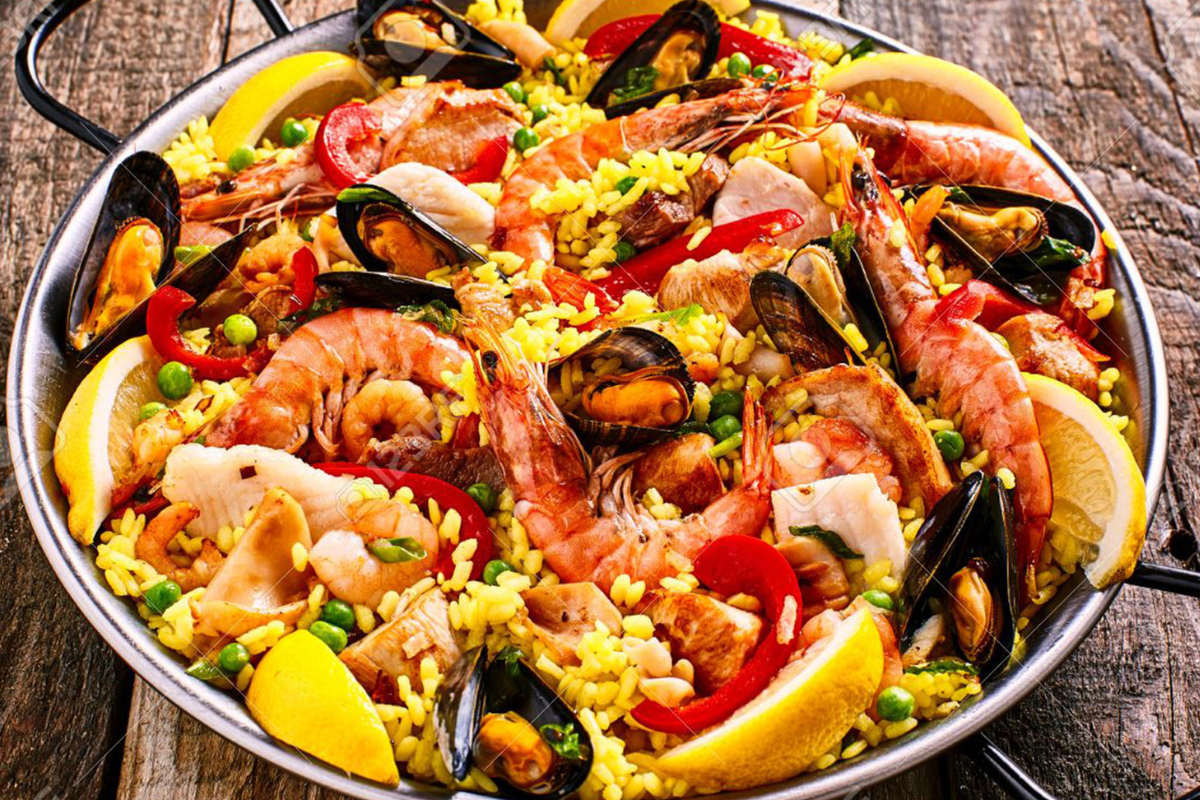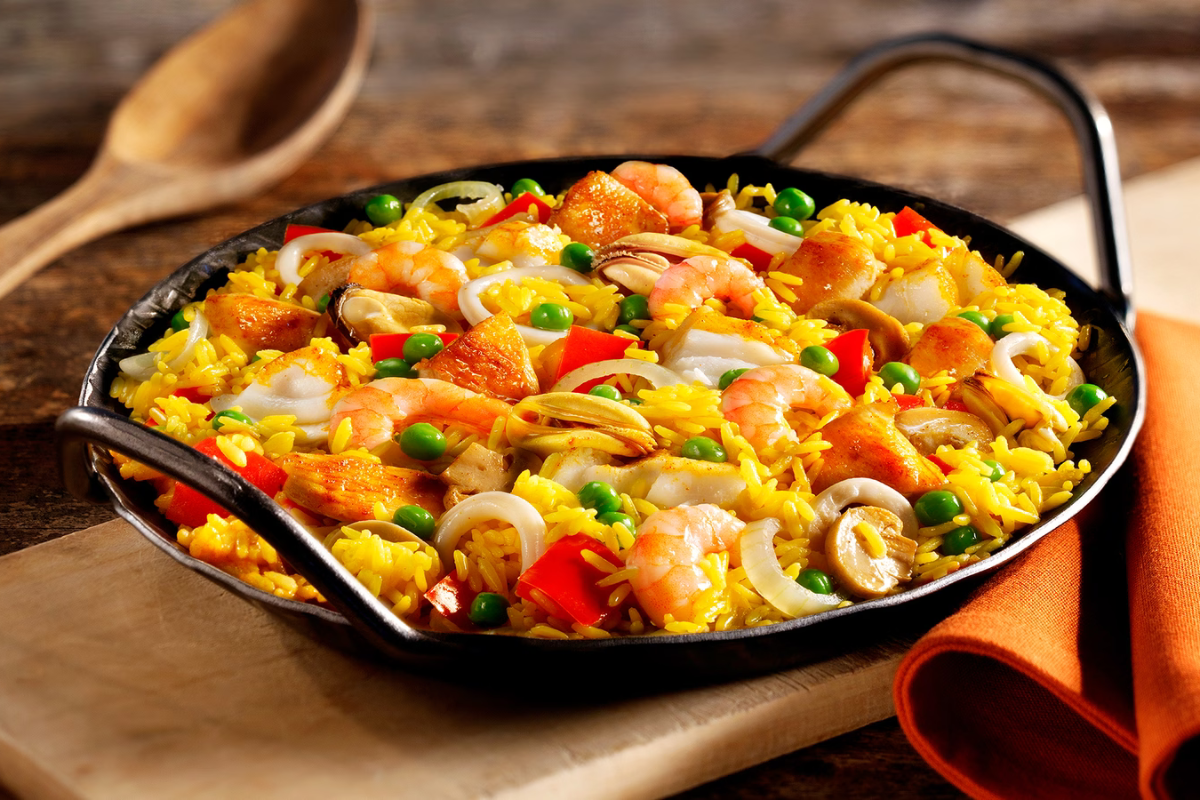Paella, the iconic rice dish of Spain, transcends mere sustenance. It’s a culinary canvas, a vibrant tapestry woven with history, tradition, and regional flavors. Mastering the art of paella requires not just following a recipe, but understanding the techniques, the regional variations, and the deeper cultural significance of this beloved dish.

Photo: Experitour
The foundation of any paella lies in the sofrito, a flavorful base made by slowly caramelizing onions, garlic, tomatoes, and peppers in olive oil. This base is then enhanced with smoked paprika, a key ingredient adding depth and smokiness. Bomba rice, a short-grain Spanish variety known for its ability to absorb flavor and retain its shape, takes center stage. The rice is toasted in the pan before adding broth, typically chicken or seafood, and saffron, the world’s most expensive spice, lending its vibrant yellow hue and subtle floral aroma.
Traditional cooking methods play a crucial role in achieving the perfect paella. In its birthplace, Valencia, paella is cooked in a wide, shallow pan called a paella pan over an open fire fueled by orange wood. This method ensures even heat distribution, crucial for achieving the signature “socarrat,” the slightly caramelized and crispy rice layer at the bottom of the pan, considered a delicacy by many.
Paella: A celebration of community and togetherness
Paella transcends its role as a mere culinary delight. It holds a significant place in Spanish culture, serving as a symbol of community, togetherness, and celebration. Traditionally, paella was cooked in large, wide pans over open fires, fostering a communal atmosphere as families and friends gathered around the preparation and consumption of this beloved dish.

Photo: Noticiero de Venezuela
The very act of preparing paella is a collaborative effort. Family members or friends would often come together to chop vegetables, season the meat, and share stories while the enticing aroma of sofrito filled the air. This shared experience solidified bonds and created lasting memories.
Paella is a centerpiece at many celebrations, from joyous family gatherings to festive holidays. The act of sharing a large pan of paella signifies unity and inclusivity. Everyone gathers around the table, eagerly awaiting their portion of this flavorful rice dish. As they savor each bite, conversations flow, laughter fills the air, and a sense of belonging is fostered.
The significance of paella extends beyond celebrations. In rural areas, it was a staple dish shared by farmworkers after a long day of toil in the fields. The communal aspect of the meal provided a sense of camaraderie and shared purpose, strengthening the bonds within the community.
In recent times, paella continues to play a role in bringing people together. Restaurants specializing in paella offer a vibrant atmosphere where friends and families can gather to enjoy this iconic dish. Tourists are often treated to paella demonstrations and cooking classes, fostering cultural exchange and appreciation for Spanish traditions.
Paella, therefore, is more than just a dish; it’s a cultural touchstone. It represents the warmth of Spanish hospitality, the joy of shared experiences, and the enduring spirit of community. Through every steaming pan of paella, the rich traditions and vibrant spirit of Spain are brought to life.

Paella transcends its culinary merit, holding a significant place in Spanish culture. Traditionally, it is a communal dish, meant to be shared with family and friends. The preparation itself can be a social event, with everyone gathering around the open fire, sharing stories and laughter as the paella cooks. This shared experience fosters a sense of community and togetherness, making it much more than just a meal.
Regional variations of Paella: A journey through flavor
While the core techniques remain consistent across Spain, the magic of paella lies in its regional variations, each reflecting the local bounty and traditions. From the mountains to the coasts, each region has its own unique take on this beloved dish, showcasing the diverse culinary tapestry of Spain.
Valencian Paella: Hailing from its namesake region, Valencian Paella holds the title of the original and most celebrated version. This paella embodies the spirit of Valencian agriculture, featuring a symphony of land-based ingredients like chicken, rabbit, green beans, garrofó, a flat white bean unique to Valencia, and even snails. All these elements are cooked in a flavorful chicken broth, infused with the golden touch of saffron. Each bite of this paella is a testament to the region’s rich culinary heritage and a true celebration of simplicity and fresh flavors.
Paella Valenciana de Marisco: As the name suggests, Paella Valenciana de Marisco is an ode to the bounty of the Valencian coast. This variation features an array of fresh seafood, typically including mussels, clams, prawns, and sometimes even lobster. The broth is made with fish stock, adding a depth of ocean flavor that perfectly complements the sweet and briny notes of the seafood. Vegetables like peas and artichokes add pops of color and texture, creating a visually stunning and delightfully balanced dish.

Paella Mixta: Paella Mixta, meaning “mixed paella,” is a popular version that combines the best of both worlds: meat and seafood. This paella offers a delightful interplay of flavors, featuring chicken, chorizo sausage, and a medley of seafood like shrimp and mussels. All these ingredients come together in a flavorful broth, creating a satisfying and balanced dish that caters to a wider range of palates.
Paella Negra: Paella Negra, also known as black paella, is a unique variation that takes a bold approach to color and flavor. This paella features squid ink, lending the rice its distinctive black color and a subtle seafood flavor. The ink not only adds a dramatic visual element but also infuses the dish with a depth of umami. Typically, this paella includes a variety of seafood like squid, cuttlefish, and prawns, along with vegetables like peppers and onions, creating a visually striking and flavorful experience.
Paella is an art form, a cultural symbol, and a testament to the rich tapestry of Spanish cuisine. From the traditional techniques and essential ingredients to the fascinating array of regional variations, paella offers a window into the diverse culinary landscape of Spain. So, the next time you encounter this vibrant dish, remember the stories it holds, the techniques it embodies, and the cultural significance it carries.

